Edit: Although this question has been flagged up by @AbinMathew as a possible duplicate of this, the solution provided to that question didn't explain very well how to relay the command logic. I was able to resolve this with the help of John Smith's article as mentioned in my answer.
I've got this test project which I'm running in order to get my head around MVVM. What I'm trying to achieve: MainWindow has a back button and a ContentControl. On Window_loaded I want to display MainGadget in the ContentControl. When I click MyBtn in MainGadget, I want to then display MyGadget in the ContentControl.
ViewModelBase is a class which is used by MainGadgetVM, MainWindowVM and MyGadgetVM. It implements the INotifyPropertyChanged interface. RelayCommand implements the ICommand interface so I want to use it for executing MyBtn_Click and displaying other UserControls.
At the moment, when I run the program only the 'Back' button is displayed. I can't seem to figure out how to display the other UserControls. Any help will be much appreciated.
DataTemplates.xaml
<ResourceDictionary xmlns="http://schemas.microsoft.com/winfx/2006/xaml/presentation"
xmlns:x="http://schemas.microsoft.com/winfx/2006/xaml"
xmlns:vm="clr-namespace:ExampleContentCtrl.VMs"
xmlns:view="clr-namespace:ExampleContentCtrl.Panels">
<DataTemplate DataType="{x:Type vm:MainGadgetVM}">
<view:MainGadget/>
</DataTemplate>
<DataTemplate DataType="{x:Type vm:MyGadgetVM}">
<view:MyGadget/>
</DataTemplate>
</ResourceDictionary>
MainWindow.xaml
<Window x:Class="ExampleContentCtrl.MainWindow"
xmlns="http://schemas.microsoft.com/winfx/2006/xaml/presentation"
xmlns:x="http://schemas.microsoft.com/winfx/2006/xaml"
Title="MainWindow" Height="375" Width="300" Loaded="Window_Loaded">
<Window.Resources>
<ResourceDictionary Source="DataTemplates.xaml"/>
</Window.Resources>
<Grid>
<Grid.RowDefinitions>
<RowDefinition Height="*"/>
<RowDefinition Height="8*"/>
</Grid.RowDefinitions>
<Button x:Name="BckSpace" Content="Back" HorizontalAlignment="Left" VerticalAlignment="Top" Grid.Row="0"/>
<ContentControl Grid.Row="1"/>
</Grid>
</Window>
MainGadget.xaml
<UserControl x:Class="ExampleContentCtrl.Panels.MainGadget"
xmlns="http://schemas.microsoft.com/winfx/2006/xaml/presentation"
xmlns:x="http://schemas.microsoft.com/winfx/2006/xaml"
xmlns:mc="http://schemas.openxmlformats.org/markup-compatibility/2006"
xmlns:d="http://schemas.microsoft.com/expression/blend/2008"
mc:Ignorable="d"
d:DesignHeight="300" d:DesignWidth="300">
<Grid>
<Grid.RowDefinitions>
<RowDefinition/>
<RowDefinition/>
</Grid.RowDefinitions>
<Button x:Name="MyBtn" Content="My Gadget" HorizontalAlignment="Center" VerticalAlignment="Top" Grid.Row="1" Command="{Binding MyBtn_Click}"/>
</Grid>
</UserControl>
MainWindow.xaml.cs
namespace ExampleContentCtrl
{
public partial class MainWindow : Window
{
public MainWindow()
{
InitializeComponent();
}
private void Window_Loaded(object sender, RoutedEventArgs e)
{
//Load MainGadgetVM via MainWindowVM.Initialize()
}
}
}
MainWindowVM.cs
namespace ExampleContentCtrl.VMs
{
public class MainWindowVM : ViewModelBase
{
private RelayCommand _ShowWorkSpace;
private static MainWindowVM _Instance;
public static MainWindowVM Instance { get { return _Instance; } }
public MainWindowVM()
{
MainWindowVM._Instance = this;
}
public RelayCommand ShowWorkSpace
{
get
{
if (_ShowWorkSpace == null)
_ShowWorkSpace = new RelayCommand(param => { });
return _ShowWorkSpace;
}
}
public void Initialize()
{
//this.ShowWorkSpace.Execute("ExampleContentCtrl.VMs.MainGadgetVM");
}
}
}
